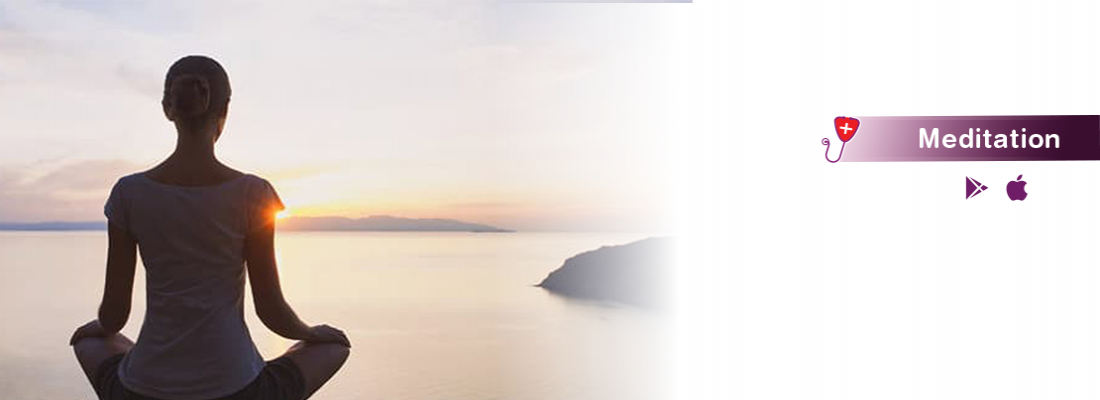
Overview
Medically reviewed by Dr. Rabeya Afroz Shomi
What is the treatment?
Meditation or contemplation involves focusing the mind upon a sound, phrase, prayer, object, visualized image, the breath, ritualized movements, or consciousness so as to extend awareness of this moment, promote relaxation, reduce stress , and enhance personal or spiritual growth. Meditation produces a state of deep relaxation and a way of balance, or equanimity. consistent with Michael J. Baime in Essentials of Complementary and medicine , meditation allows one to completely experience intense emotions without losing composure. The consequence of emotional balance is bigger insight regarding one's thoughts, feelings, and actions. Meditation also facilitates a greater sense of calmness, empathy, and acceptance of self et al. . Meditation is usually suggested as a complement to medical treatments of disease; especially , it's a crucial complementary therapy for both the treatment and prevention of the many stress-related conditions. Regular meditation may reduce the amount of symptoms experienced by patients with a good range of illnesses and disorders. Based upon clinical evidence, also as theory, meditation is seen as an appropriate therapy for anxiety disorder , generalized mental disorder , substance dependence and abuse, ulcers, colitis, chronic pain, psoriasis, and dysthymic disorder—a disorder that involves a gentle , depressed mood for a minimum of two years. Moreover, meditation may be a valuable adjunct therapy for moderate hypertension (high blood pressure), prevention of asystole (heart attack), prevention of atherosclerosis(hardening of the arteries), arthritis (including fibromyalgia), cancer, insomnia, migraine, and stroke . it's a complementary therapy for moderating allergies and asthma because it reduces stress, which is prevalent in these conditions. Additionally, meditation may improve function or reduce symptoms of patients with neurologic disorders like paralysis agitans , MS , and epilepsy.
How is that the treatment done?
Meditation evolved into a variety of purposes and practices, from serenity and balance to access to other realms of consciousness to the concentration of energy in group meditation to the supreme goal of Samadhi, as within the ancient yogic practice of meditation. Sahaja yoga meditation is considered a mental silence meditation, and has been shown to correlate with particular brain and brain wave activity. Some studies have led to suggestions that Sahaja meditation involves 'switching off' irrelevant brain networks for the upkeep of focused internalized attention and inhibition of inappropriate information. Some studies offer evidence that mindfulness practices are beneficial for the brain's self-regulation by increasing activity within the anterior cingulate cortex. A shift from using the proper prefrontal cortex is claimed to be related to a trend faraway from depression and anxiety, and towards happiness, relaxation, and emotional balance. Jacobson's Progressive Muscle Relaxation was developed by American physician Edmund Jacobson within the early 1920s. during this practice one tenses then relaxes muscle groups during a sequential pattern whilst concentrating on how they feel. Various postures are haunted in some meditation techniques. Sitting, supine, and standing postures are used. Popular in Buddhism, Jainism and Hinduism are the full-lotus, half-lotus, Burmese, Seiza, and kneeling positions. Meditation is usually done while walking, referred to as kinhin, or while doing an easy task mindfully, referred to as samu. Direction of mental attention... A practitioner can focus intensively on one particular object (so-called concentrative meditation), on all mental events that enter the sector of awareness (so-called mindfulness meditation), or both specific focal points and therefore the field of awareness. One style, Focused Attention (FA) meditation, entails the voluntary focusing of attention on a selected object. the opposite style, Open Monitoring (OM) meditation, involves non-reactive monitoring of the content of experience from moment to moment. Most of the traditional religions of the planet have a practice of using some sort of rosary as tools in devotional meditation. Each bead is counted once as an individual recites a mantra until the person has gone all the way round the mala. Specific meditations of every religion could also be different.
Who is eligible for the treatment? (When is that the treatment done?)
Meditation has profound impacts on lowering stress, cortisol levels and various health conditions associated with the negative effects of stress. Meditation has profound impacts on lowering stress, cortisol levels and various health conditions associated with the negative effects of stress. Studies show that meditation helps give people hope and a way of empowerment once they otherwise feel overwhelmed within the face of great illnesses. Meditation is employed as a natural intervention for cancer patients and has shown consistent benefits, including: improved psychological functioning, enhanced coping and well-being in cancer outpatients, better quality of life, physiological improvements and health-related outcomes.
Who isn't eligible for the treatment?
People with physical limitations might not be ready to participate in certain meditative practices involving movement.
Are there any side effects?
There are negative side effects that nobody ever talks about. 'Meditation can leave you feeling even more stressed,' the Daily Mail reports. Considering that a lot of folks rarely sit alone with our thoughts, it isn’t hard to ascertain how this might cause difficult thoughts and emotions rising to the surface for a few people – which we may, or might not , be equipped to affect . Classical Buddhist literature discusses potential pitfalls of mindfulness and meditation, like makyō (hallucinations) and 'Zen sickness' – a way of imbalance and loss of identity. Some people – especially if they practice intensive meditation for several hours, like on a retreat – have challenging or difficult experiences. Some religious teachers within Buddhism say these are often a part of the trail of the religious experience. However, for people doing meditation hoping to experience health benefits, without a spiritual context, these experiences are often unexpected and difficult to affect .
What are the post-treatment guidelines?
After the practice: Drink many water to assist the purification process; hear your body, to your thoughts and to your emotions; Use long deep breathing to release tensions of any kind; Integrate in your daily actions what you learn during the practice; Maintain a graceful posture and observe the rhythm of your breath.
How long does it fancy recover?
The body doesn't need time to get over meditation, but you would like a while to soak up the impact that meditation has on your well-being and time to urge wont to the thought of creating it a part of your life routine. Take it slowly, and you'll probably be more likely within the future to stay with it
What is the worth of the treatment in India?
It varies from Rs. 500 to Rs. 2000 per month. Moreover, if along side meditation, yoga and other exercice classes are included, it'll cost more.
Are the results of the treatment permanent?
Frequent and long-term meditation brings you to a more permanent state of well-being and emotional stability
What are the alternatives to the treatment?
Information not available.

